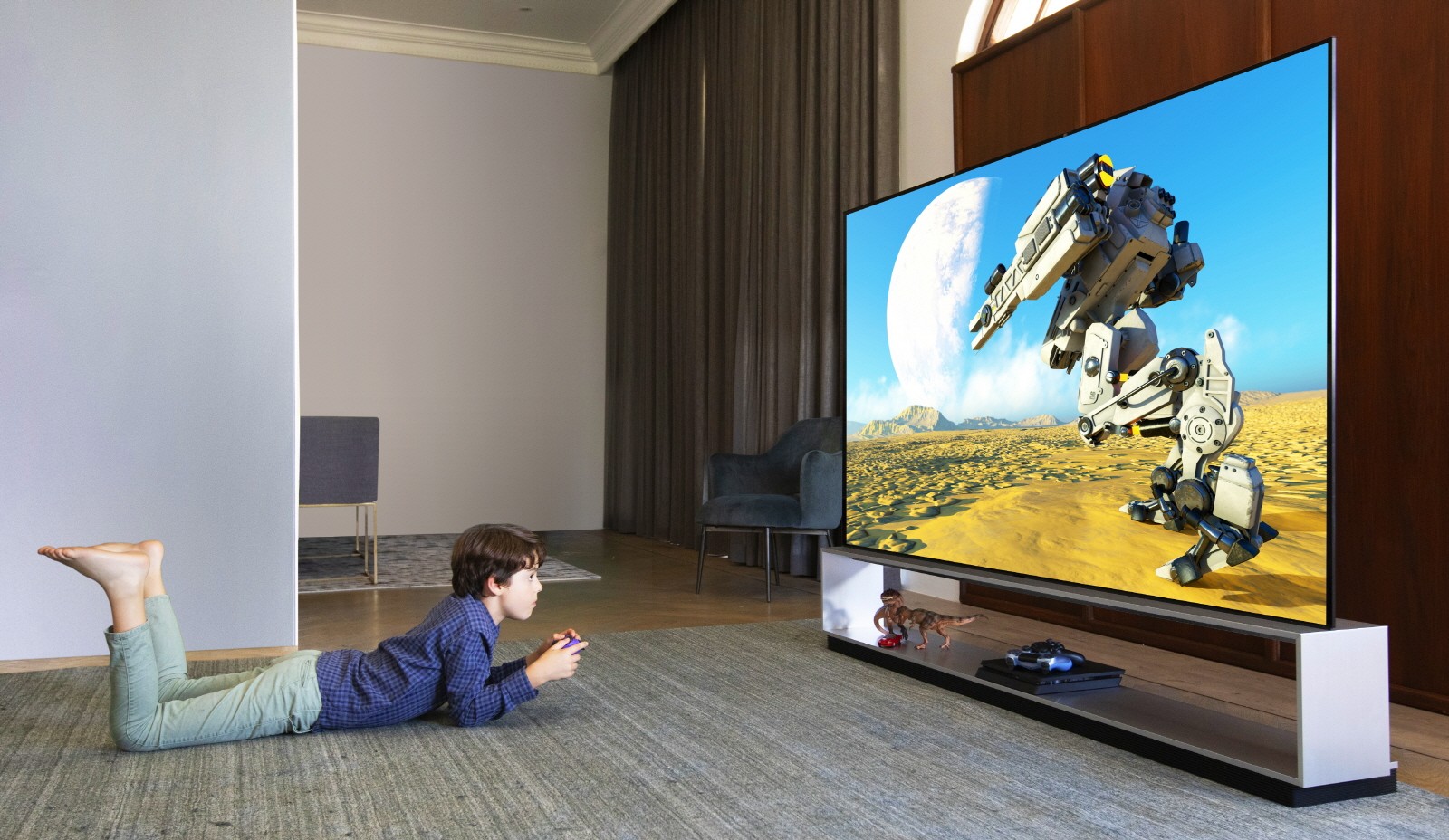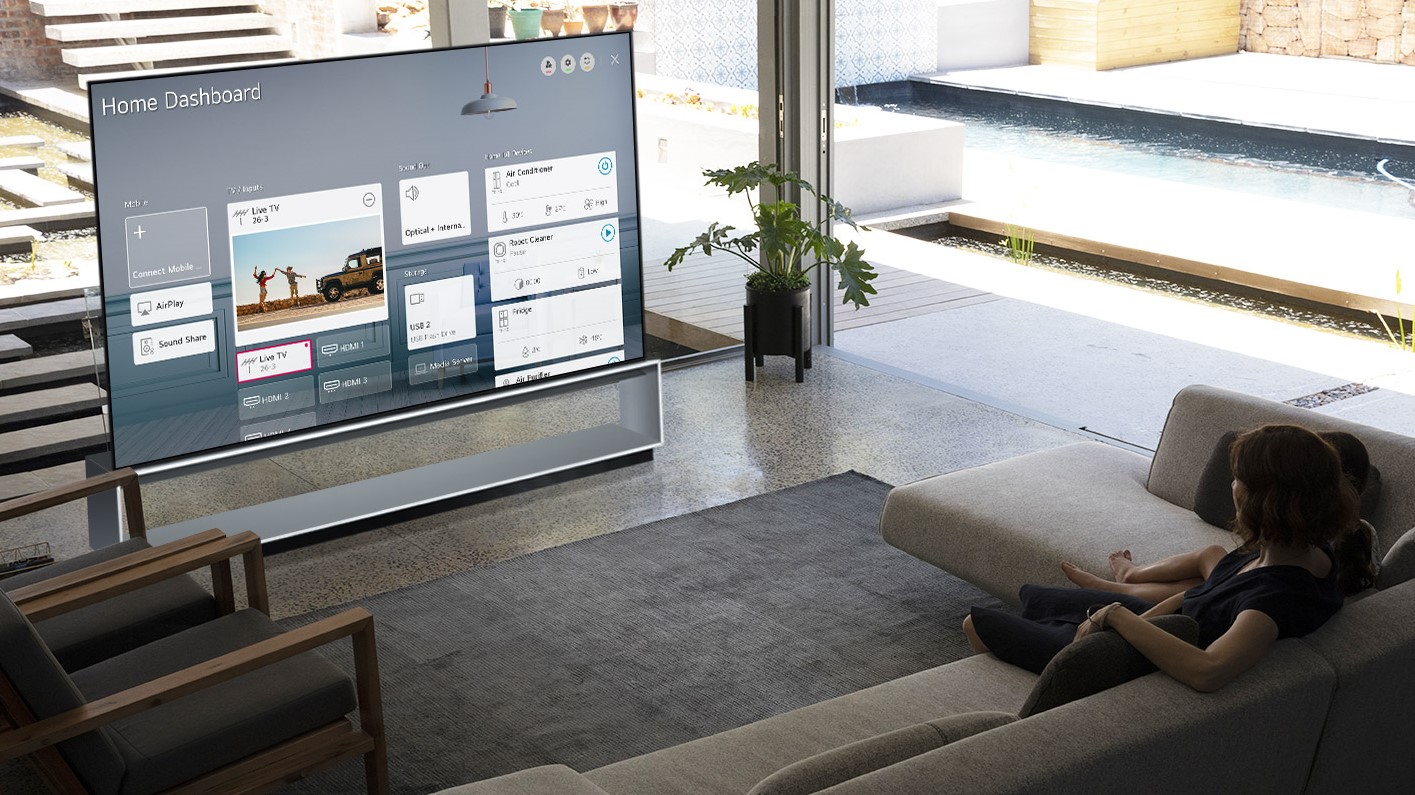OLED TVs are not overpriced — here are 4 reasons why
A new, smaller OLED TV ignites controversy about OLED pricing, but don't get too wrapped up in comparisons.

The recent news that LG's new 48-inch CX OLED TV would sell for $1,500 has prompted some discussion about TV pricing. While our own Richard Priday has shared his opinion (and not an uncommon one) that the price is too high, I think it's worth stepping back and looking at the broader question that this brings up. Are OLED TVs too expensive?
No, my colleague Richard is not the only one to think that $1,500 is high for a 48-in TV. Similar opinions have been voiced by other Tom's Guide staff members, as well as on other review sites, including our sister site TechRadar.
- Check out the best TVs we've reviewed
- Save! The best OLED TV deals
- Is LG's new 48-inch OLED TV too expensive?
Again, these aren't unreasonable reactions, and anyone looking at the new 48-inch CX OLED as simply "a 48-inch TV" is bound to have a bit of sticker shock when they see the price. The fact is that $1,500 is a lot of money, and a 48-inch TV is small enough that that price tag can seem overly high. But, as someone who pays very close attention to TVs and TV pricing, I'm here to tell you that OLED TVs are a much better value then their current price tags suggest.
OLED technology: Truly premium displays
For starters, let's look at the OLED technology that distinguishes these TVs from everything else on the market. Due to the self-emitting lighting of an OLED display, an OLED TV will be able to do things that no LCD set can match. Per-pixel lighting lets the display illuminate only the areas of the screen that should be bright, and keep the dark sections dark. That means no halos or light blooms the way you might get with an LCD set, and none of the elevated blacks you get on LCD TVs.
The result is a superb picture, with wide viewing angles, inky blacks and outstanding HDR performance. There's a reason that OLED models from LG and Sony routinely top our list of the best TVs, and that's because they deliver the best experience you can get.
But manufacturing OLED panels is expensive, and trickier than LCD equivalents. Where a standard LCD TV uses one layer for color and another for the backlight, OLED has to do it all in a single layer. That drives up the need for tight quality control – there's no replacing the backlight when you get a dud – and the panel is actually made by printing individual pixels onto glass. It's so difficult, in fact, that very few manufacturers actually make their own OLED panels; even a tech giant like Sony relies on LG panels for its OLED models.
New technology and falling prices
OLED technology is also relatively new, with the first OLED TVs only coming to the US in 2013. Since that time, TV resolution has jumped from 1080p to 4K and now 8K. And yet the price of OLED TVs has steadily dropped in the 7 years it's been on the market.
LG's first OLED set, the 55-inch LG OLED 55EA9800, sold for $9,999 for a full HD TV. Only a year later came the first 4K OLED TV, the 65-inch 65EC9700, selling for $8,999 in 2014. This has been the overall pattern ever since, with OLED TVs getting better and better while dropping in price year after year.
Which brings us to today. In 2019, LG's most affordable B9 OLED sold for $2,499 for a 65-inch model and $1,599 for the 55-inch version.
That's a price drop of thousands of dollars in just 5 years, for a superior technology that only one company really makes. For contrast, look at how the price of the iPhone has changed since Apple introduced the first model in 2008 for $499. In half that time, LG's TVs have gotten better picture, better sound, and dramatic improvements in smart capability, and the price has dropped like a stone.
Improvements driven by 8K technology
And LG isn't resting on its laurels, coasting on the visual superiority of OLED technology. In recent years the company has refined the technology immensely, all but eliminating the burn-in effect that plagued early OLED TVs. LG has also dramatically improved the brightness levels offered by current OLED panels as HDR content has driven a demand for brighter and brighter screens. The company has also pushed the boundaries of physical design, with an upcoming rollable OLED TV and a patent for a slick looking foldable TV.

But the biggest change has been the move to 8K resolution, which ramps up the number of pixels on a screen from 4K's 8.29 million to more than 33 million on a 7640 x 4320 8K panel. It's the next step in TV innovation, and LG has jumped in with both feet, introducing the first 8K OLED TV last year, and including six separate 8K models in the LG TV 2020 lineup.
Why is this relevant? Because the latest offering from LG is a 48-inch 4K OLED, the smallest OLED to come to market. It's also equivalent to one fourth of a 96-inch 8K panel. While LG hasn't announced an 8K OLED in this size, the pixel density is the same, and we surely owe the existence of this smaller 48-inch model to LG's 8K developments.
Approaching the Holy Grail: OLED prices below $1,000
But what's really important here is that LG is about to make some TV shopper's dreams come true with the possibility of an OLED TV selling for under $1,000 by the end of this year. For a product that started off at 10 grand less than a decade ago, the very idea of a sub-$1,000 OLED TV is pretty incredible, especially when you consider that the only LCD TVs to come close in terms of overall quality – namely, the most-premium model Samsung Q90 QLED TV – still sells for $2,499.
The sub-$1,000 OLED TV has basically become something of a Holy Grail for those who want the best TV quality at something approaching a reasonable price. While that's still much, much more expensive than the budget-priced 4K LCD sets you'll find in our best cheap TV deals roundup, or on the sales shelf at Walmart and Best Buy, it will be a major milestone for affordability.
Ther new 48-inch LG CX OLED is launching in June with a price of $1,499. But TV pricing isn't static, and if past patterns around retail pricing are any indicator, I would expect the retail cost of the 48-inch OLED to drop to $1,300 or even $1,200 by this fall. And when Black Friday rolls around at the end of November, there is a very good chance that the 48-inch CX OLED will hit sales prices as low as $1,000.
Boom, Holy Grail achieved.
That's all a long-winded way of saying that, in perspective, OLED TVs are very reasonably priced for a premium technology product. It's an expensive sort of display to make, has seen consistent improvements while dropping in price, and is now going to be more affordable than ever before. It's still pricey, but it's also still the best thing available for TVs. And if you want the best TV you can get, LG is selling them at the lowest prices in history.
- OLEDs and more: LG's 2020 TV lineup
- The best cheap TV deals you can get
Sign up to get the BEST of Tom's Guide direct to your inbox.
Get instant access to breaking news, the hottest reviews, great deals and helpful tips.
Brian Westover is currently Lead Analyst, PCs and Hardware at PCMag. Until recently, however, he was Senior Editor at Tom's Guide, where he led the site's TV coverage for several years, reviewing scores of sets and writing about everything from 8K to HDR to HDMI 2.1. He also put his computing knowledge to good use by reviewing many PCs and Mac devices, and also led our router and home networking coverage. Prior to joining Tom's Guide, he wrote for TopTenReviews and PCMag.

